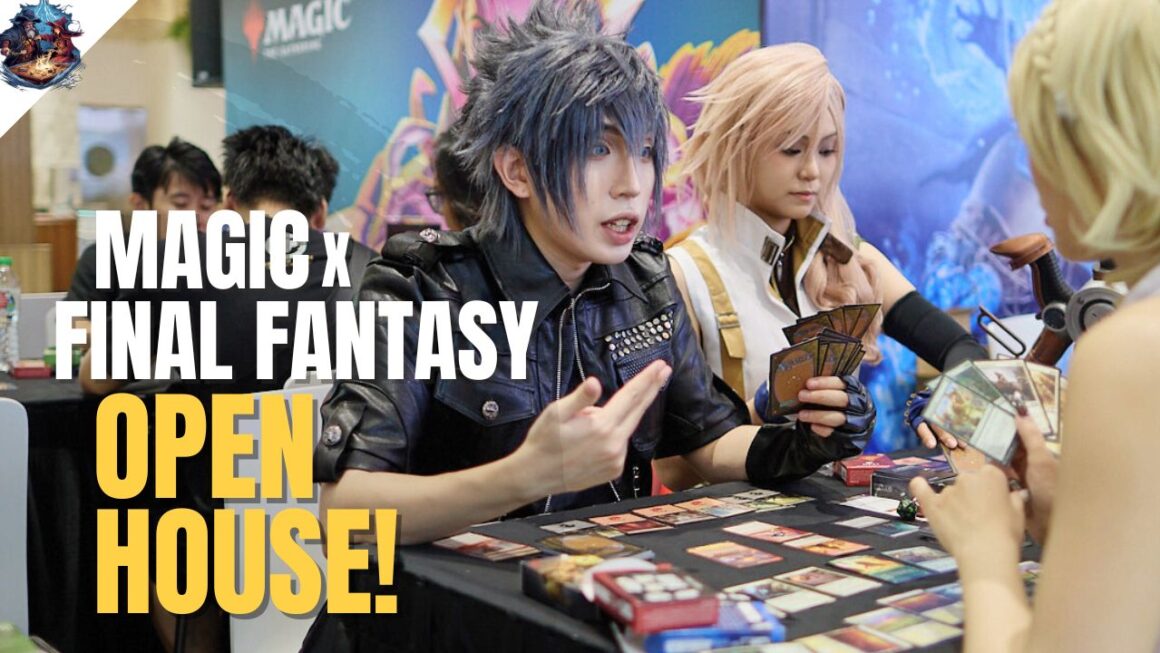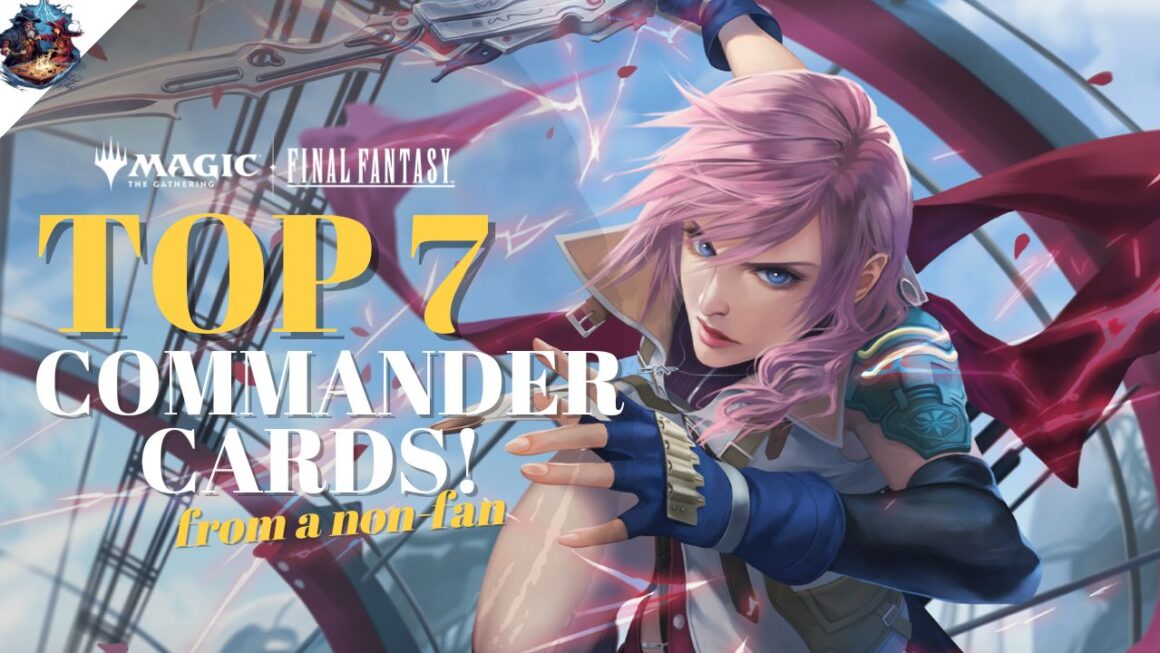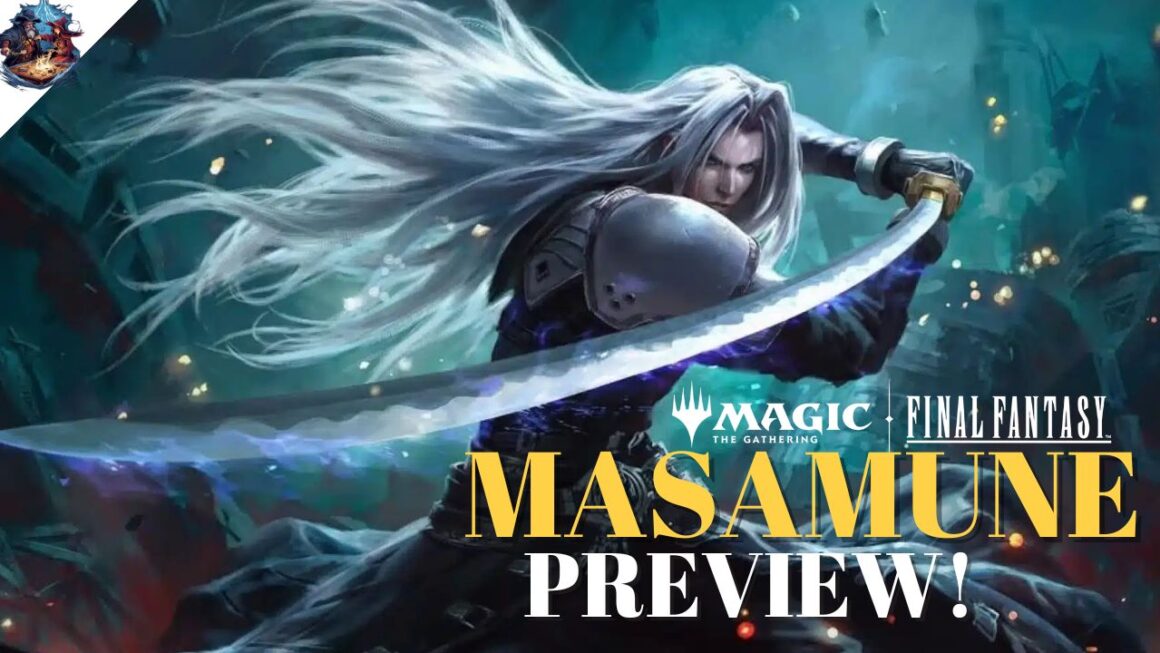One of the best skills a Magic: the Gathering player can learn is knowing when to keep an opening hand or do a mulligan (reshuffling the deck, and redraw the hand but effectively ending with one less card for each mulligan). There have been World Championship games lost because of the wrong decision, and every player has been down that road.
There are several points to consider when deciding to keep an opening hand or mulligan: play order, your play style, the kind of deck you are playing, and predicting how your game will unfold.
The first question to consider is: who’s going first? If we are going first, the opponent will begin with an extra card (8 versus your starting 7). So if we mulligan, we’re essentially at a two card disadvantage (their 8 versus our starting 6), assuming the opponent keeps his/her hand.
The next point to consider is: what kind of deck are you playing? An aggressive (aggro) deck may require just 2 lands in the opening hand to get going, while a midrange or control deck might be more comfortable with 3 lands in the starting hand. In this case scenario, we will analyse from the perspective of a Mono Red Aggro player.

A good opening hand for Mono Red Aggro would firstly not have too many lands. You’ll want to be storming out the gates from the start, and too many lands won’t help you do that. For this particular deck, our most expensive cards are 3 Torbran, Thane of Red Fell that cost 4 mana each, hence as long as we’re confident in reaching our 3rd land early in the game, the odds are more in your favour.
The Good Opening Hand That You Should Keep

We have 2 lands, 4 cards that cost 1 mana each, and 1 3-mana card. We can essentially play 6 cards from this opening hand, and as long as we draw that 3rd land (which is of high chance since lands are 1 out of every 3 cards), we’ll be able to cast the remaining Legion Warboss. Hence the best logical decision here is to keep.
The Bad Opening Hand That You Should Mulligan
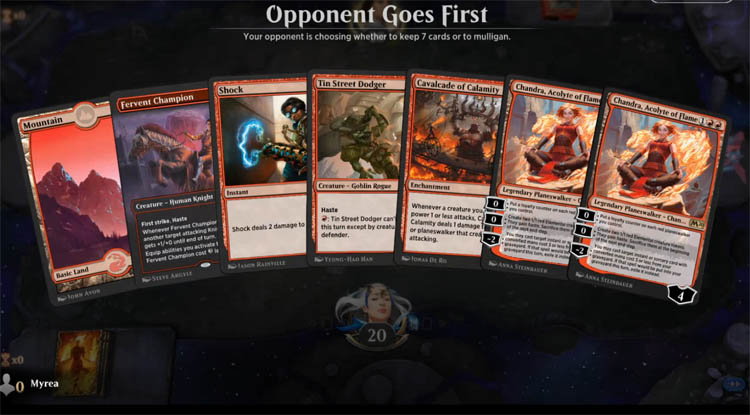
There’s a big problem at first glance – we only have 1 Land. Even though we have three 1-mana cards to cast with that 1 land, bear in mind that if your next draw is not a land, we’d be casting 1 card each turn, slowing down our aggro deck’s explosive start. If we were going first in the match, the 1 Land would hurt even more as we do not draw an extra card unlike our opponent.
To make matters worse, we have two 3-mana duplicate cards (Chandra, Acolyte of Flame, who is a Legendary Planeswalker), which means 1 card has already become redundant because we can only have one copy of each Legendary on the battlefield.
Another important point in this 1-land hand is that we do have Light Up the Stage in hand. As Light Up provides valuable card draw for its 1-mana Spectacle cost, it can help us increase the chances of finding that 2nd and 3rd Land. However we have none. Statistically, the best decision here would be to mulligan.
But Must You Mulligan That Hand?
Despite the 1-land hand, the hand does offer a lot of potential. Some players will choose to take a risk and keep this hand, while hoping to draw another land in the next turn. Then with 2 mana available, they’d be able to cast Cavalcade of Calamity (a critical card in this deck). As it turned out in this match, the 2nd and 3rd land did arrive soon, but as the opponent was also running a Mono Red Aggro deck, we were outpaced and ultimately defeated.
One of the Best Opening Hands Possible in Mono Red

Above is probably one of the best opening hands we could hope to get for Mono-Red Cavalcade. We have 2 Mountains, so that sets up our early-game mana base just right. We have Fervent Champion and Scorch Spitter, 2 very good 1-mana creatures to cast, and combos up nicely with our crucial trump card – Cavalcade of Calamity. And to top it off with a little sweetener, we have Anax, Hardened in the Forge as an insurance card against board wipe cards such as Shatter the Sky. The few cards that we could hope for in the next few turns is a Castle Embereth, Light Up The Stage and perhaps another Fervent Champion.
When to Mulligan in a Two Colour Deck?
Since we’ve already covered mono-coloured decks, which have simpler Mana requirements, let’s look at a more complex scenario. When playing two (or more) colours, the most important consideration is the Mana base you have available from your opening hand. In this example there is a red-white Equipment themed deck, filled with mostly lower costing Creatures and Artifact Equipment that only need colourless Mana to play.

Immediately you’ll see in this hand that we are lacking even a single Plains for white Mana. To make things worse, our two small Creatures – Dwarfhold Champion and Kor Blademaster – both require white Mana. Essentially you’ll be unable to cast any of these cards in your hand if you don’t draw a Plains. Because of that inability to get onto the board, I would mulligan this hand.
Now what if we still only had two Mountains but the Creatures were red and not white? That would make keeping the hand far more attractive because now you’re only relying on one variable factor to happen(drawing a Plains) rather than two (drawing a Plains or drawing a red spell to cast).
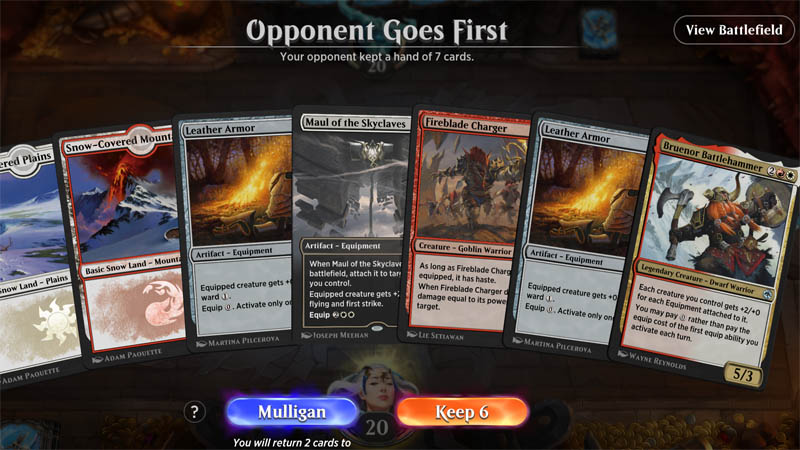
Generally it is better when you have Mana colours sorted out in the opening hand, even if the total number of Lands is one too few. In this opening hand above with the same red-white Equipment deck, there is both a Mountain and Plains hence you have all the colours needed to cast spells. However, with only 2 Lands, it would spell trouble if you don’t draw more soon.
Thankfully, this deck has a low Mana curve, and with some luck you’ve drawn 3 spells that cost only 1 Mana. Once you draw a 3rd Land (regardless of type), you can cast Maul of the Skyclaves. In this scenario, since you’ve already mulligan once, you could either put away your most expensive card Bruenor Battlehammer or the second copy of Leather Armor since it would be more redundant (but not entirely useless) with 2 copies on the Battlefield.
Ultimately you have to make a choice depending on how you predict the game would unfold. If you think the 3rd and 4th Land will come swiftly, then hold on to Bruenor because it can help you win. But if you feel you’ll draw more Creatures instead, then the second Leather Armor will prove more useful.
What About Non-Aggro Decks?
For some decks that rely on a combo, for example a Winota, Joiner of Forces or Fires of Invention deck, you might want to have it in the opening hand as it is so crucial to winning the match. Hence some players do mulligan down to 5 cards so that increases their chances of getting the crucial card in their hand.
If you’re playing a more control-focused deck that wants to play the long game, your ideal opening hand would be quite different from what this Mono-Red deck requires. Those midrange decks would generally like to see more lands in hand, and a 4-mana card that provides a lot of value would not be considered expensive to keep.
The End Step
Now that you’ve got a great opening hand for the game, the next step is to win games! You could aim for Mythic Rank in Arena’s Constructed format, read this guide to find out more about getting there.


